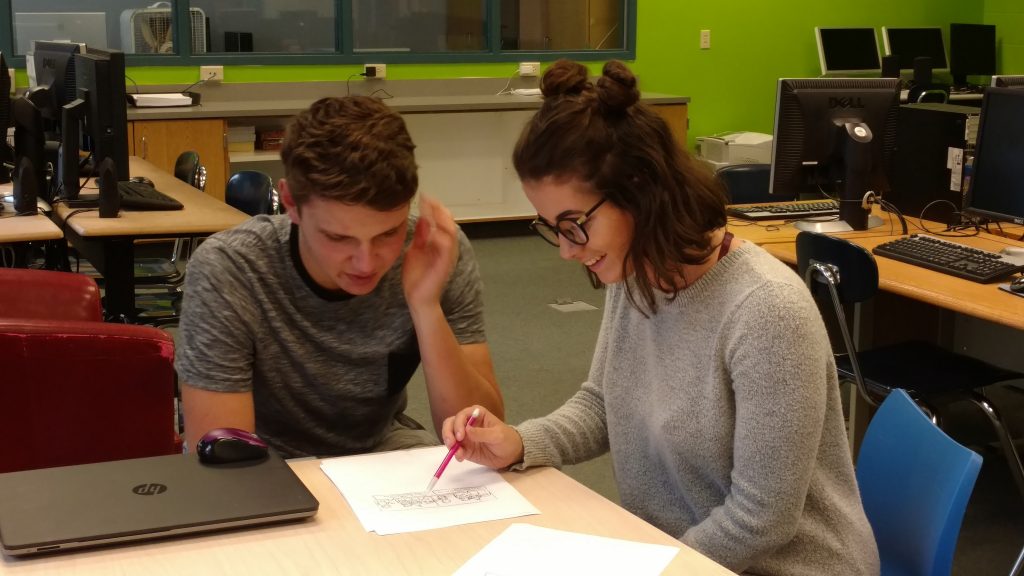This week we focused on developing and iterating the design for the Empathy game. We decided to focus on empathy as a useful tool for conflict mediation, with a focus on perspective taking as an important part of practicing empathy. 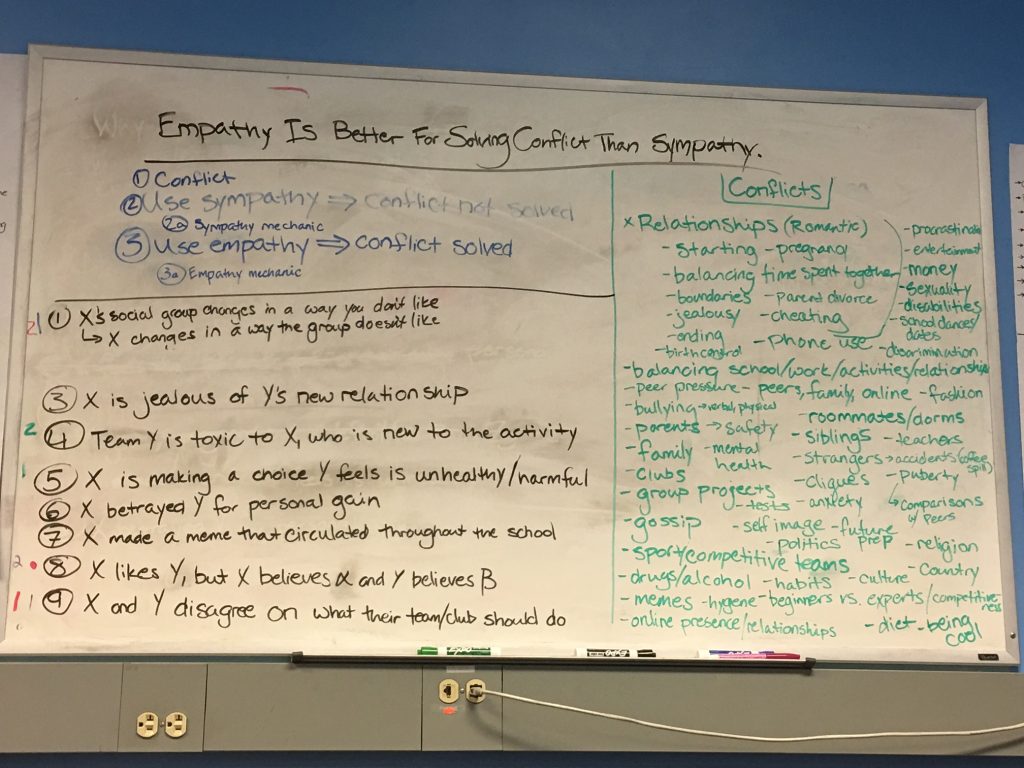
Once we had that goal, we started by identifying the essential components of the experience:
- Conflict is introduced
- Attempt to solve conflict using sympathy – unsuccessful
- Shift to empathy
- Attempt to solve conflict using empathy – successful
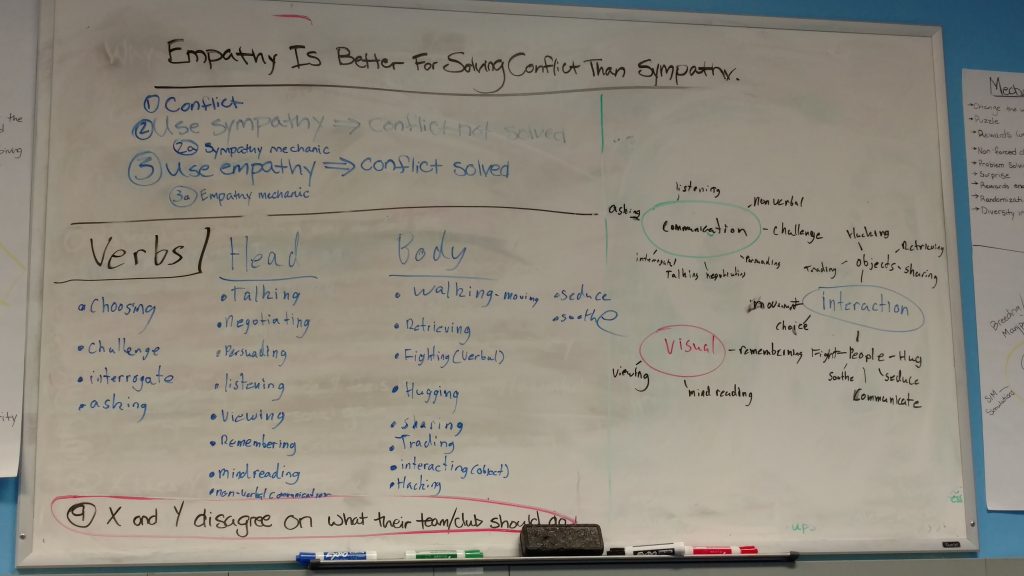
After that, we brainstormed examples of conflicts that high school students deal with. From there, we create a short list of potential narratives, like “X and Y disagree on what their team should do” which, incidentally, we chose as our primary framing conflict. We also decided that because we want to emphasize perspective taking, we would focus the game on visual images of the situation at hand and potential outcomes, which would become clearer as players gained more information via empathetic responses.
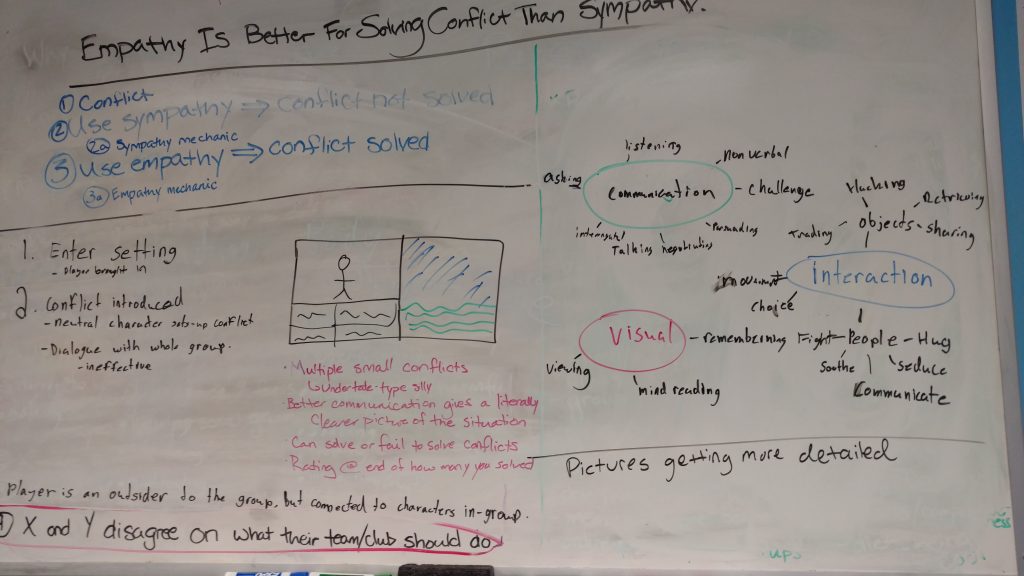
However, as we started to get into the details of how the game would play out, we realized that framing it within one type of conflict introduced layers of detail and potential special circumstances that seemed likely to get in the way of the goals of the game.
Therefore, we started thinking about using multiple smaller conflicts that the player would try to mediate. That way, they have multiple attempts to figure out what works best, and at the end can see a summary of which conflicts they successfully solved.
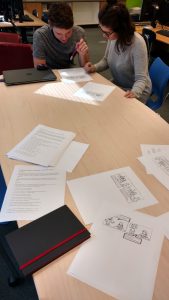 On Friday, we had a playtest with several students from Brentwood High School. We brought three simple storyboards showing some of the conflicts we had come up with and asked the students what they thought the characters were thinking and what they thought the characters should do to resolve the conflict. We also asked them some more general empathy focused testing based on the Adolescent Measure of Empathy and Sympathy. They had a lot of fun filling in the stories behind the pictures and we learned a lot from them. Particularly, we learned that they already know to focus in on facial expressions as the best way to figure out how someone is feeling. We also learned that they tend to talk as if they have very little empathy, but when pressed a little they gave us some very thoughtful responses.
On Friday, we had a playtest with several students from Brentwood High School. We brought three simple storyboards showing some of the conflicts we had come up with and asked the students what they thought the characters were thinking and what they thought the characters should do to resolve the conflict. We also asked them some more general empathy focused testing based on the Adolescent Measure of Empathy and Sympathy. They had a lot of fun filling in the stories behind the pictures and we learned a lot from them. Particularly, we learned that they already know to focus in on facial expressions as the best way to figure out how someone is feeling. We also learned that they tend to talk as if they have very little empathy, but when pressed a little they gave us some very thoughtful responses.
Based on their responses, we are tweaking our design to focus on noticing and responding to facial expressions more than on saying the right things. 